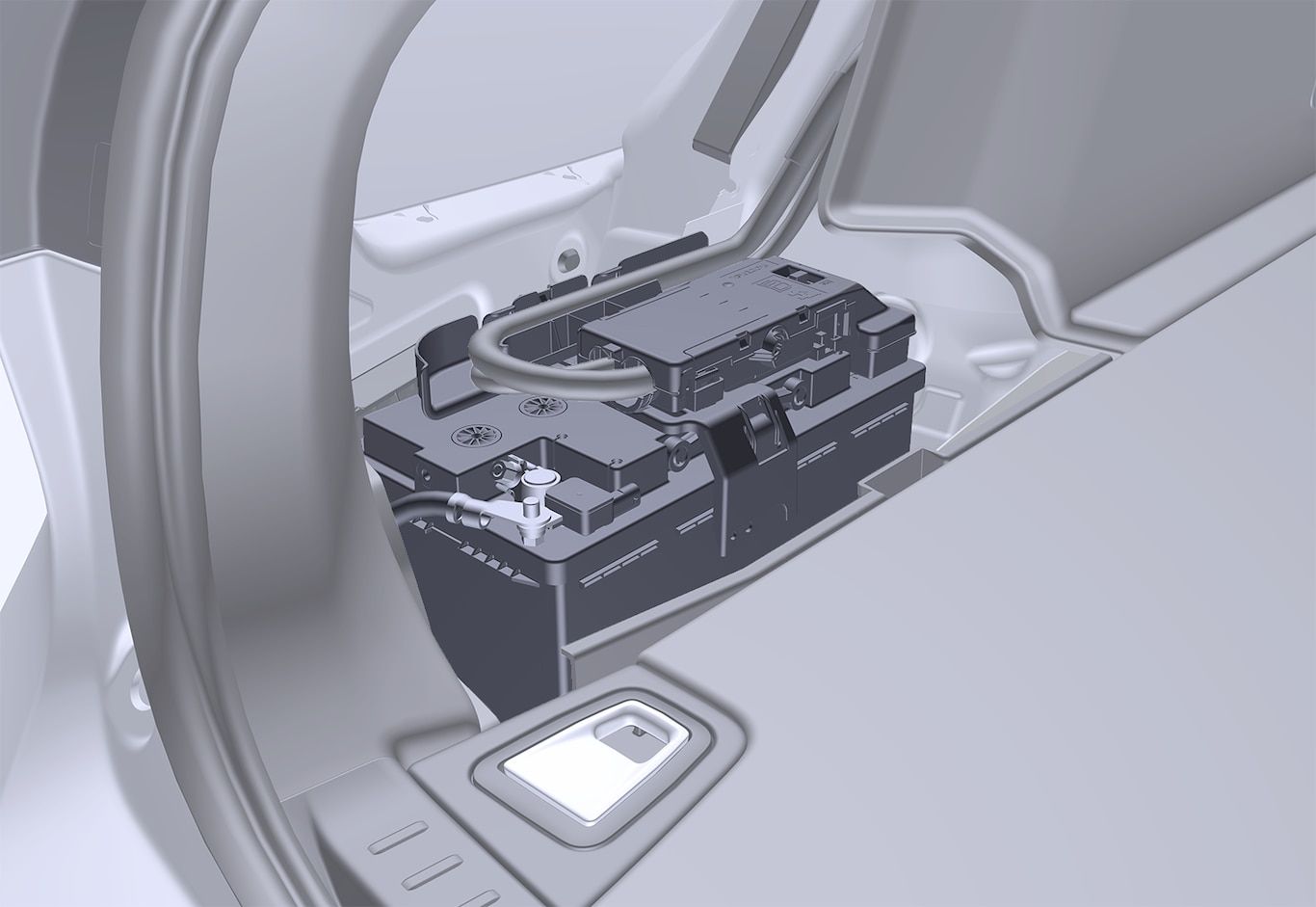The starter battery is a 12 V-battery that is dimensioned to power the car model's specific electrical system and functions.
- Never disconnect the starter battery when the engine is running.
- Check that the cables to the starter battery are correctly connected and properly tightened.
Important
Important
Warning
Warning
- The battery can generate oxyhydrogen gas, which is highly explosive. A spark can be formed if a jump lead is connected incorrectly, and this can be enough for the battery to explode.
- Do not connect the jump leads to any fuel system component or any moving part. Be careful of hot engine parts.
- The battery contains sulphuric acid, which can cause serious burns.
- If sulphuric acid comes into contact with eyes, skin or clothing, flush with large quantities of water. If acid splashes into the eyes - seek medical attention immediately.
- Never smoke near the battery.
The starter battery's service life, capacity and long-term storage
The service life of the starter battery is influenced by a number of factors, such as the number of starts, discharges, driving style, driving conditions, and climate conditions. The battery's starting capacity gradually decreases over time. Extreme cold further limits starting capacity.
The battery level may become low if the car if the car is not used for any length of time or if it only travels short distances.
To keep the starter battery in good condition, at least 15 minutes of driving a week is recommended, or connecting the battery to a battery charger with automatic trickle charging. A starter battery that is kept fully charged has a maximum service life.
Location
